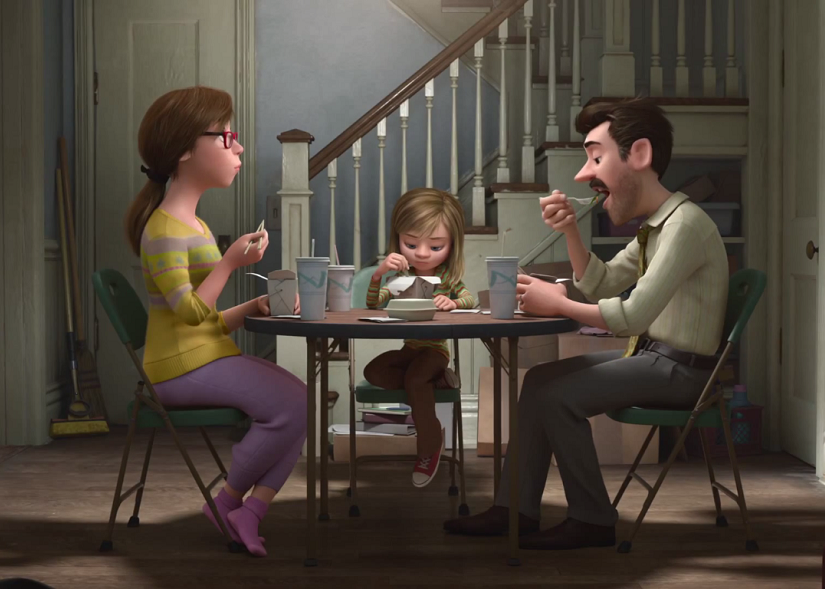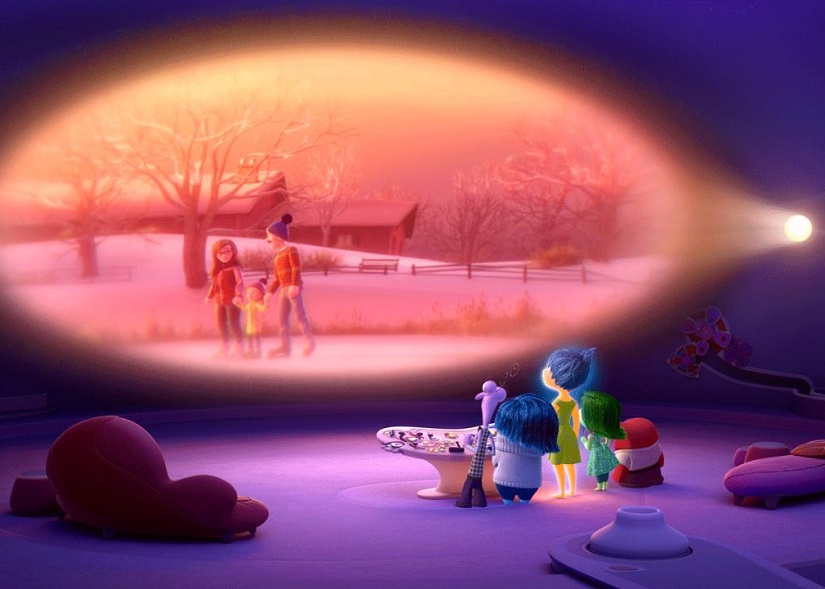Inside Out is another movie this summer to be breaking box-office records, having achieved the biggest ever opening weekend for an original movie despite coming second to the behemoth that is Jurassic World. Considering Hollywood’s laser-focus on sequels and franchises, that’s something to be celebrated. That it’s a return to original material for Pixar, whose phenomenal run of form has taken something of a dip in recent years with the likes of Cars 2 and Monsters University (some would include 2013’s Brave, though I enjoyed that one), will also be welcomed by fans.
My personal affection for the studio varies, having found several of their movies to be outstanding (Ratatouille, Up, Toy Story 3, The Incredibles), others (both sets of Cars and Monsters movies) no better than the much-maligned output of animation rival Dreamworks, and in one case, borderline cynical (Wall-E) in its advertising to a young audience. Given the rave reviews Inside Out has been receiving, I was looking forward to rediscovering a re-energised Pixar at the top of its game. Unfortunately, Inside Out continues the recent trend of the studio struggling to find new things to say.
[youtube id=”seMwpP0yeu4″]
Inside Out
Director: Pete Docter
Rating: PG
Release Date: June 19, 2015
The movie is a metaphorical journey through the emotional turmoil of Riley, a young girl on the verge of adolescence who moves away with her parents from a comfortable life in Minnesota to the uncertainty and challenges of a new start in San Francisco, where her father has taken a non-specified job. The emotions in Riley’s head are anthropomorphised in the form of Joy (voiced by an ebullient Amy Poehler), Sadness, Disgust, Fear and Anger. It’s an interesting enough idea, but one very much of a kind with Pixar’s affinity for characters existing outside the perception of the human world and their commonly explored themes of growing up and moving on after difficult periods in life.
The problems begin at the very start – and no, I’m not talking about the animated short, Lava, which precedes the movie, although it too is disappointingly corny despite an appealingly oddball premise – with Joy opening the movie with a prolonged, exposition-heavy monologue explaining how memories work, the difference between standard memories and core memories, how they’re organised, the role played by the five emotions in doing so… it’s lumbering and overcomplicated, and possibly unnecessary. The visuals (of Riley being born, experiencing her first two emotions) tell an effective enough little story that the fundamental ideas are seeded without the need for oppressive wordiness. Considering the studio’s history with exquisitely crafted silent storytelling, it’s an uncharacteristic failing.
Unfortunately, it’s one which Inside Out repeats over and over again, introducing a never-ending stream of concepts to be explained in-depth despite rarely being any more useful than one in a long line of contrived obstacles between getting the lost Joy and Sadness back to Riley’s emotional headquarters (solid pun), all while overcomplicating and straining the credibility of her extensive inner world. It’s a strange case of the broad strokes of that world feeling oversimplified and discordant, while the minutiae is overexplained to the point of clogging up the narrative engine. Among Riley’s many internal mechanisms are long term memories stored in mazes, personality traits represented as islands, a production studio for dreams, a train of thought carrying interchangeable facts and opinions (zing) between various locations, a spatially-distorted area for abstract thought… there’s an internal logic of sorts piecing it together, but it feels too scattershot and segmented to work in the moment, hence the endless explanations. It’s not the richness of the ideas that’s the problem, but the movie’s inability to visualise or clarify them succinctly.
With so much exposition to get through, character development also draws short shrift. It doesn’t initially matter that Riley is something of an everygirl, lacking strong identifying characteristics beyond an affinity for hockey, but until the very end of the movie, Joy is unchangingly defined by her eponymous emotional imperative, while Sadness’ purpose is merely put in a slightly different and somewhat self-evident context. The remaining three emotions, left governing Riley’s mental state in the interim, barely register despite solid voicework from the cast. The events of Riley’s outer existence may be of decidedly secondary importance to what is motivating them, but enough time is spent in the human world that the copy + paste nature of her generic life becomes more and more of a drag as things progress in the entirely predictable direction.
The movie pulls together at the end, finding a slightly more poignant theme in its final moments than the ‘sadness is important too!’ idea which dominates 90% of proceedings and treated as if some grand revelation, despite being covered in greater depth in an episode of South Park a while back, not to mention Doctor Who. Amy Poehler’s charming voicework is invaluable in pulling the movie through a middle section which has no particular relevance to the thematic outcome of the climax, and a small number of memorable jokes (particularly one about an earworm-y gum jingle) distract from the stark absence of laughs elsewhere. Phyllis Smith also does terrific things with Sadness, a very difficult character, making an engaging double act between her unwavering pessimism and Joy’s absolute optimism.
Ultimately, even the movie’s biggest strengths feel like they’re retreading ground that Pixar has already extensively covered. A character, not featured in any advertising and therefore not to be spoiled here, turns up with the sole purpose of meeting a sad end, and it’s hard to believe anyone who hasn’t seen a movie before won’t immediately see his fate coming or the contrived machinations required to get him there. The movie’s two funniest jokes come during the end-credits, one involving cats and the other dogs, recalling director Pete Docter’s vastly superior previous effort for the studio, Up!, whose structure and themes Inside Out attempts to replicate but with much of the grace and silliness (an inconsequential but amusing trip through abstract thought comes closest) lost in translation. There are some interesting moves in play, most notably the absence of any sort of villain, but for the reams of exposition which turn so much of the central narrative into a slog, the movie fails to give those details any meaningful substance in Riley’s emotional development, while her human existence feels rote at best. Mixed feelings for all of us, then.


